Of Parrots and Men. The Contemporary Phenomenon of Interspecies Art
What is the first thing that comes to your mind when you think of the term “artist”? Do artists have to be human?
This blogpost focusses on the contemporary phenomenon of so-called Interspecies Art[1] by conducting a case study of the German artist duo Hörner/Antlfinger, who live and work together with two African Grey Parrots, Clara and Karl.[2] While visiting them in Cologne, I was able to gain insight into this specific human-animal-relation and which aesthetic products can emerge from it.
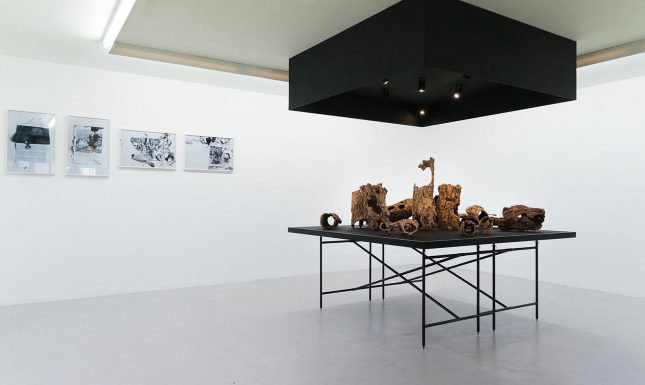

CMUK is one example of an interspecies art collective, proposing an alternative to the model of the sole-creating genius human. The name CMUK is an acronym of its members Clara, Mathias, Ute, and Karl. Ute Hörner and Mathias Antlfinger[3] view Clara and Karl not as their pets, but as equal partners.
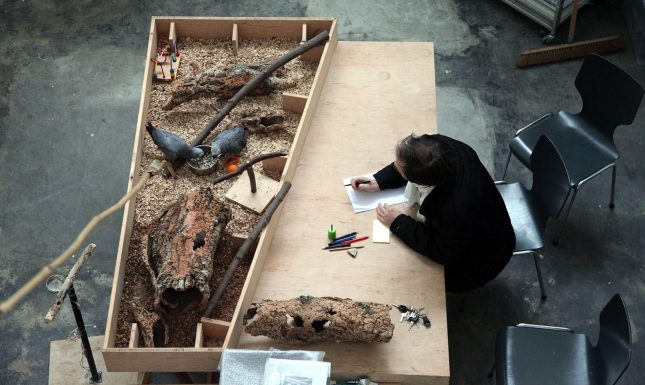

CMUK mainly produces wood sculptures and works made of paper. In 2015, their first works (Weekly and Substraction One) were exhibited in a white cube situation (Figure 1). While Clara and Karl shred natural materials with their claws and beaks without interruption on the part of Hörner/Antlfinger, the humans see their duty in arranging the products to a complete art piece in order to make it accessible to a broader public within the art discourse.[4] Compare the illustrations below: Can you guess which one is man-made and which is not?
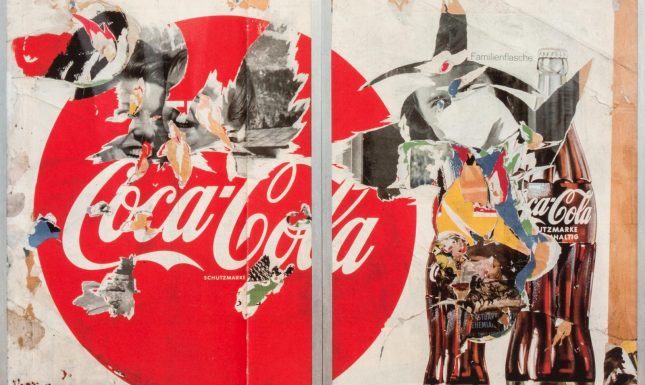

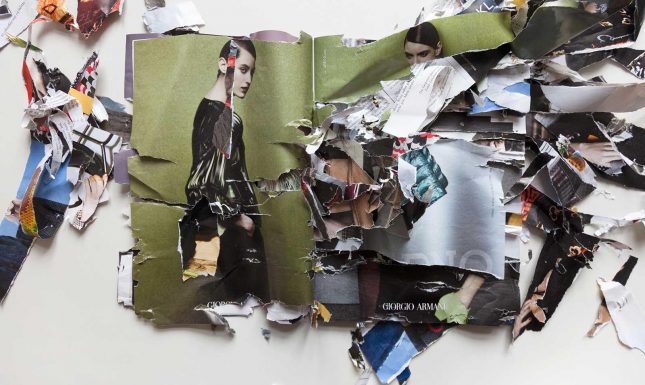

Whereas figure 3 is solely man-made showing Wolf Vostell’s Coca Cola (1961), the other piece from the series Weekly[5] is created collectively by CMUK. At first glance, you can hardly tell a difference in terms of quality. Although the assumption that the parrots are aware of Vostell’s art or the concept of décollages is not very likely, the parrots’ traces in the material strongly resemble a human’s art piece and vice versa. Showing these similarities to human artefacts, only by additional information it can be determined that more than one species was involved. Furthermore, the production is only possible with all parties participating as a collective. Therefore, animals and humans have an equal authorship in CMUK’s works that can be, additionally, proclaimed art.
A Site Visit
In the summer of 2017 Ute Hörner and Mathias Antlfinger invited me to their home for an interview. The parrots were with us the whole time as equal inhabitants of the flat. This gave the impression that the focus lies on living together in an interspecies household rather than for the sole purpose of making art. During my presence, the parrots actively chose to interact with humans. In addition to a common workplace (Figure 2), this human-animal relation is strongly interwoven. The birds are always free to decide whether they want to rest in their enclosures or to engage with Hörner/Antlfinger and artistic objects. However, while I was there, Clara shredded pieces of a cardboard and a cork roll for over 40 minutes straight, while stepping back from time to time, seemingly to reflect on what she had done so far.[6]
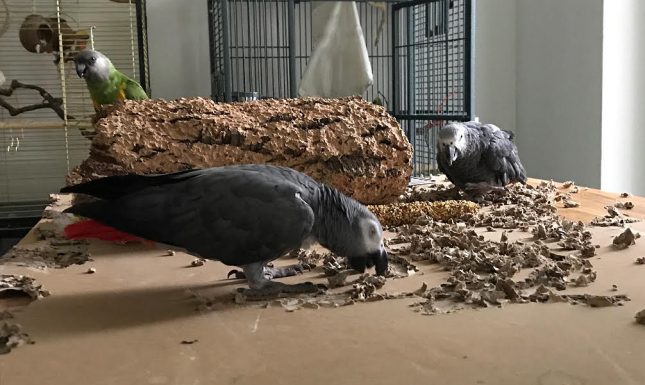

During my observation, Clara was extremely engaged, rolling her eyes, eagerly ripping the pieces. Although of course one can never know for sure, it seemed like all this was an expression of creative joy.[7]
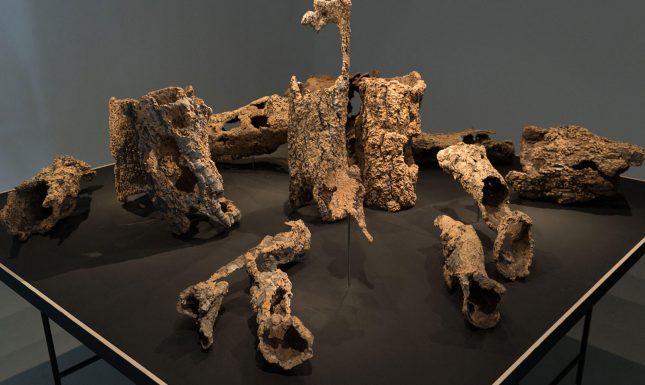

The parrots’ working process in CMUK’s first series of sculptures, Substraction One, reminds of the (human) artistic technique of direct carving, an immediate carving without a template. The parrots’ traces correspond to those of human tools and reflect their individual style. Clara and Karl have no tools, working only with their beaks and claws. This is an important aspect since many interspecies artworks arise by humans teaching animals their “human” way of doing art. For example, elephants or apes painting with artificial paints and brushes. The parrots on the other hand only use their tools given by nature, which implies that it is a more natural attitude rather than one forced on them by humans. In addition, Hörner/Antlfinger insists that both parrots have individual techniques: While Clara works with her whole body shredding huge pieces (Figure 7), Karl pays more attention to detail scratching miniature pieces out of paper and wood (Figure 8).
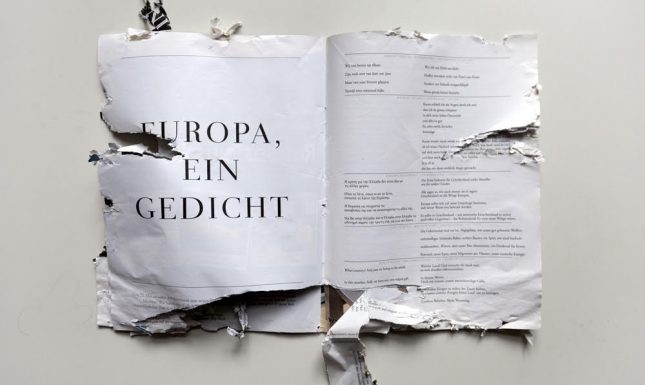

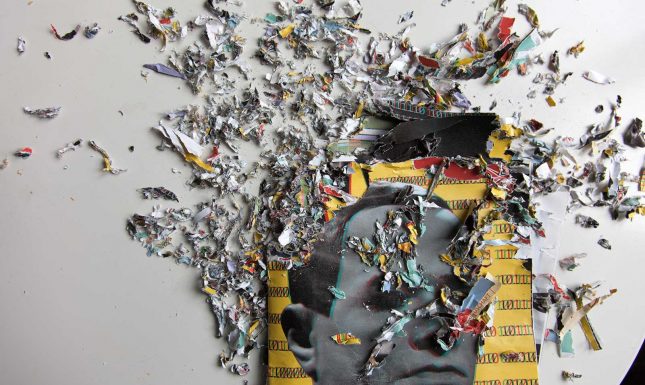

The example of CMUK shows that interspecies art is not only possible in theory but also in practice. CMUK can be perceived as especially pertinent because the parrots work independently out of an intrinsic motivation and live closely entangled with the humans.[8] After this visit, I understand why interspecies art is generally perceived as a critique of anthropocentrism. The human artists never force their partners to participate and appreciate the products made by animals as their personal creative contribution. Thereby, aesthetical sensitivity and expression are questioned as being exclusively human. Additionally, working as a collective might broaden the artistic horizon: if a work of art is created pleasing both humans and animals, it is possible that it will generate more aesthetic pleasure than one created by a single species. Through the cross-species collaboration, the worlds of humans and animals entangle, differences become secondary, resulting in a collaboration that is more than the sum of its parts. This short insight might motivate others to reconsider one’s definition of artists and artistry if interspecies art is perceived as a step towards establishing animals as being equal to humans. Even though human concepts of art might be incomprehensible to animals, it can be said that these individuals, Clara and Karl, have passion for working with specific materials and to conclude, that the emerging products can, in my opinion, be seen as art.
Notes
[1] In wake of the Animal Turn, a term to describe the general and growing interest in human-animal-relationships, one of the ways to overthrow a hierarchical relation is by involving animals as individuals into one’s creative process, as it is done in Interspecies Art. The term arose in the 1970s, coined mainly by Jim Nollman. This artistic concept aiming to overcome species borders became accessible to a broader public in the 21st century by a multiplicity of exhibitions on human-animal-relations. In 2009, Lisa Jevbratt published a field guide on how to collaborate artistically with animals. According to Jevbratt “[t]he concept of interspecies collaboration is intended to be somewhat humorous, invoking a smile” but can also question an anthropocentric world order (Lisa Jevbratt, Interspecies Collaboration – Making Art Together with Nonhuman Animals, 2009, 11 and 13).
[2] The collective’s name negates any anthropocentric hierarchy by including everyone no matter their species. Moreover, it is alternating species and gender: CMUK = Clara (female parrot), Mathias (male human), Ute (female human) and Karl (male parrot).
[3] Ute Hörner and Mathias Antlfinger have been working as an artist duo under the name Hörner/Antlfinger since the early 1990s. After researching about different human-animal-relations, Hörner/Antlfinger started to rethink their connection with their parrots. In 2014 they began their artistic interaction with Clara and Karl.
[4] This human interference, however, could of course be criticized as anthropocentric.
[5] For the series Weekly, Clara and Karl have been editing a booklet of the magazine “Die Zeit” every week since 2014, provided by the human artists. After the parrots worked with it, Hörner/Antlfinger will arrange it to a composition and take photographs of it.
[6] This behaviour reminds of the male bowerbird. This bird builds impressive and strikingly individual constructions to support its courtship dance. As in Clara’s working process, bowerbirds also evaluate their work and make corrections afterwards. Although the same materials are available to many animals, it is possible to observe site-specific styles that may be based on regional aesthetic ideals (Jessica Ullrich, “Jedes Tier ist eine Künstlerin“, in Das Handeln der Tiere. Tierliche Agency im Fokus der Human-Animal Studies, ed. Sven Wirth et al (Bielefeld: 2016), 255). Hence, the bowerbird refutes positions that deny birds a sense of aesthetic altogether. Both the bowerbird and the two parrots show a capability of self-determined action (agency), making it possible to target the strict anthropocentric perception of artists.
[7] The whole time she was working none of the attendees interrupted her and the product of her work was only examined after she focussed on something else.
[8] However, additional research would be necessary to answer questions like: Do other parrots also work on objects in a purely aesthetic way? How would wild parrots respond to Hörner/Antlfinger’s artistic demands? Could we call objects made by wild-living parrots art or do we need human participants?
References and Further Readings
Lisa Jevbratt, Interspecies Collaboration – Making Art Together with Nonhuman Animals, 2009 (20/12/2017).
Aimee Morgana, “Communication and Language. Interspecies Communication – N’Kisi The Parrot: A Personal Essay“, in Encyclopedia of Human-Animal Relationship. A Global Exploration of Our Connections with Animals. Volume 1: A-Con, ed. Marc Bekoff, 242-248. Westport, Connecticut/London: 2007.
Jessica Ullrich, “Jedes Tier ist eine Künstlerin“, in Das Handeln der Tiere. Tierliche Agency im Fokus der Human-Animal Studies, edited by Sven Wirth et al, 245-265. Bielefeld: 2016.
Jessica Ullrich, “Kunst“, in Lexikon der Tier-Mensch-Beziehungen, edited by Arianna Ferrari and Klaus Petrus, 206-211. Bielefeld: 2015.
Credits Pictures
CMUK Über CMUK. http://h--a.org/de/cmuk/studio...
CMUK Substraction One. http://h--a.org/de/cmuk/subtra...
CMUK Weekly. http://h--a.org/de/cmuk/weekly...
© Dorothee Fischer and Leiden Arts in Society Blog, 2018. Unauthorised use and/or duplication of this material without express and written permission from this site’s author and/or owner is strictly prohibited. Excerpts and links may be used, provided that full and clear credit is given to Dorothee Fischer and Leiden Arts in Society Blog with appropriate and specific direction to the original content.



0 Comments